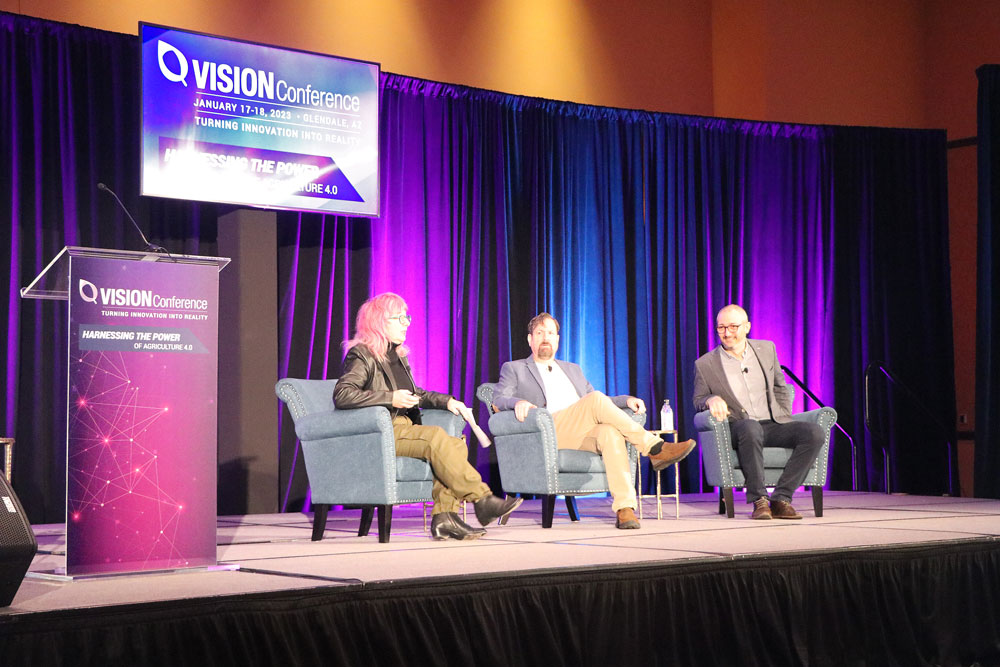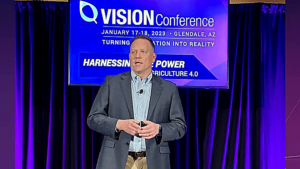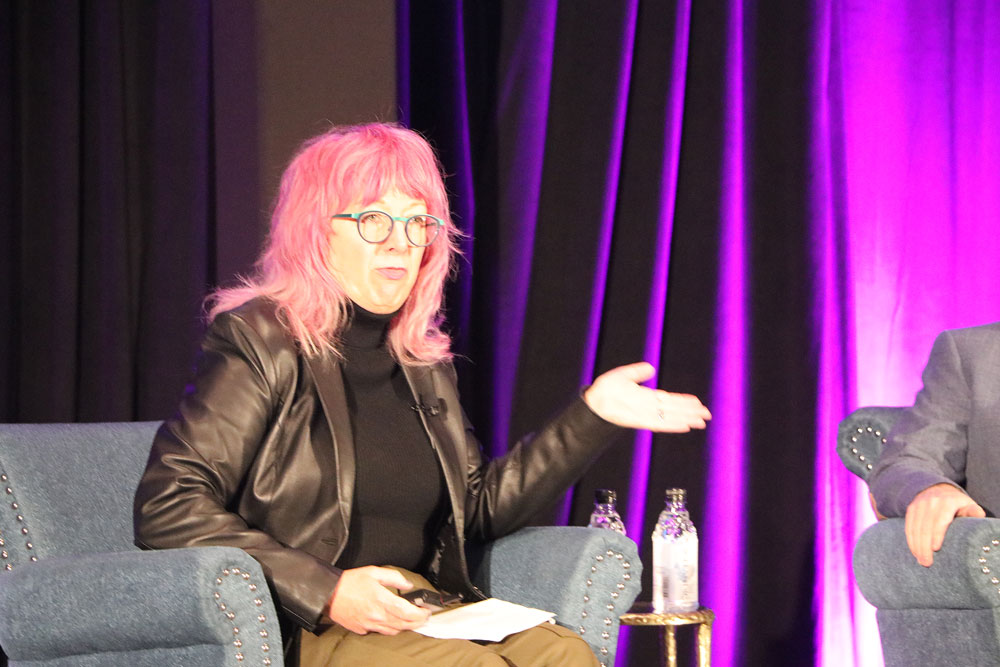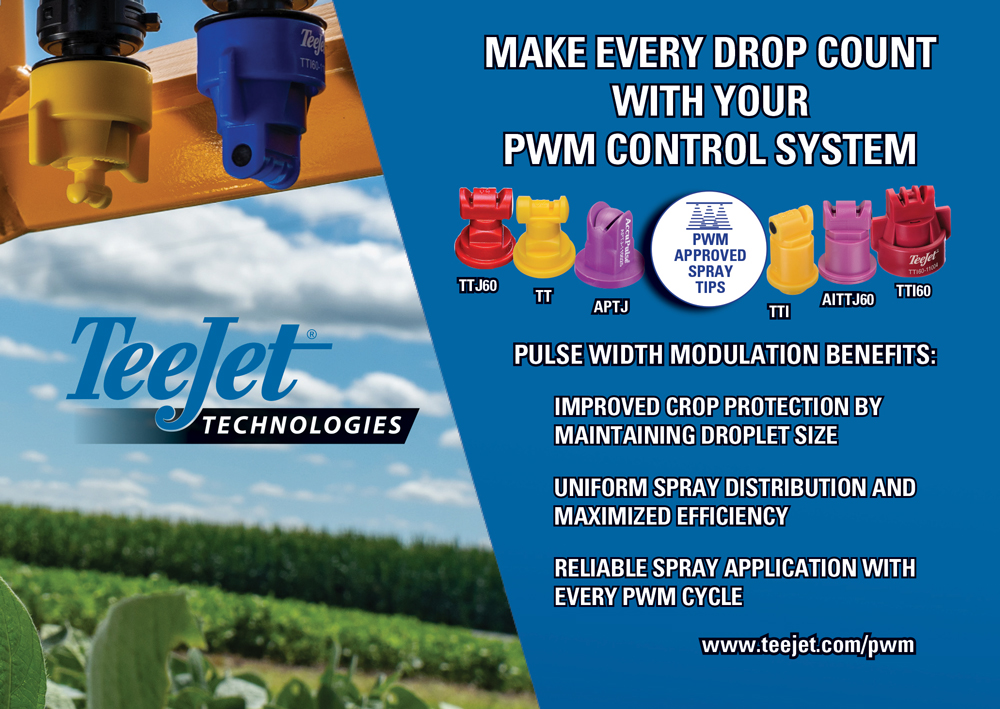Agriculture of Tomorrow

The 6th annual VISION Conference connected attendees with the innovative creators of ag technology.
Scroll Down to Read
The 6th annual VISION Conference “Harnessing the Power of Agriculture 4.0” introduced 165 attendees to the next wave of agriculture technology. The event, held in January, in Glendale, Ariz., taught attendees about how technology today will transform into the ag tools of tomorrow. The event kicked off with a welcome from Joe Monahan, President and Chief Operating Officer of Meister Media Worldwide, the parent company of AgriBusiness Global™ magazine.
“Our goal with the VISION conference is to bring together a broad mix of voice, perspectives, and capabilities that are driving change across the food value chain,” said Monahan. “It’s really looking into the future of ag tech.”
Where Are We Going Next
John Teeple, Global Partner Leader, Agriculture, Amazon Web Services set the stage with his keynote presentation, “Where Are We Going Next?: A presentation on Agriculture 4.0.”

John Teeple
“I see Ag 4.0 as a continuation of maturing, automating and accelerating of the value of those existing technologies and allowing us to focus on doing more with less, creating more customer value and delivering more overall value to the farmer,” said Teeple. “Every organization needs to be working today on digital transformation to understand what has to change to support where technology is going.”
How the Metaverse Will Transform the Way You Do Business
Robin Raskin, Founder of The Virtual Events Group, and former editor of PC Magazine, shared thoughts on agriculture in the metaverse.

Robin Raskin
“Everyone’s hearing about it, but there are some really strong marquee brands that are playing around the metaverse and doing some cool things.”
Raskin shared a “digital twin” – a virtual representation of a real automotive plant that can be viewed and experienced simultaneously by individuals around the world allowing them to collaborate on projects despite been separated by thousands of miles.
While not yet active in the agriculture space, it’s not hard to see how the metaverse might be used in ag, whether it’s partners working to develop new products or modeling supply chain issues. Raskin did offer one example of how it might be used.
“What I love about meeting like this is that while farming is the most local of tasks, we have a lot to learn from others,” Raskin said. “Using the combination of IoT (Internet of Things) to bring data in from remote areas; AI (Artificial Intelligence) to help model and learn from that data; visualization techniques, training and sharing information are all going to help us overcome the food scarcity situations that face us around the globe.”
Digital Modeling for Precise Accurate Forecasting
While some of the topics addressed at the VISION Conference are conceptual, digital modeling is one that exists as technology continues to advance.

Kathleen Glass
“It’s real, but we’re on a journey,” said Kathleen Glass, Vice President of Marketing for AquaSpy and a presenter at the conference. “Where we are today is sort of the early phases of pulling the elements together, the sensors and the communications and the data platforms and analytics. And what will happen is over time there’ll be more data, and the analytics will progressively get smarter. We’re really on a very exciting starting point for this journey to virtual cropping.”
The concept allows growers to analyze their fields in details of soil, water, and even down to individual crop leaves. As ag tech continues to move forward with sensors, artificial intelligence, image recognition, autonomous driving and drones, and other ag tech developments, the more complete a virtual big picture becomes accessible.
Quantum Computing
Using words like superposition and entanglement, quantum computing seems like something out of science fiction. Santiago Nunez-Corrales, a research scientist with the National Center for Supercomputing Applications at the University of Illinois, Urbana-Champaign, discussed “Quantum Computing: Prospects for Agribusiness in the Digital Age.”
The presentation focused on the prospects for what quantum computing might one day do and expressed the need to get a workforce trained in how to use it, as it is in a competitive phase of development and in ten years, will be introduced into work environments.

Santiago Nunez-Corrales
“Quantum computing refers to an evolving collection of theories and technologies intended to allow us to perform computation using a different set of natural laws from those driving traditional computers,” Nunez-Corrales said.
“While a significant number of technical challenges need to be overcome to reach mainstream commercial significance, we seem to be on track for a major computing revolution in the next decade.”
During his presentation at the VISION Conference, Nunez-Corrales explained the difference in problem solving speed using existing computer technology and quantum computing. An extremely complex problem using existing computing technology could take the “life of the universe” to solve. With quantum computing that same issue could be solved in weeks.
Top photo, Oblivion VC-AdobeStock.com
All other photos courtesy of Meister Media Worldwide

